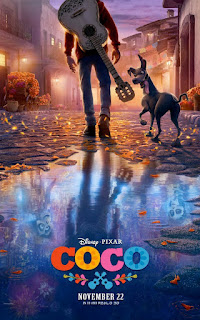Monday Musings: O'Brien Read/Watch: The Silver Crown
The Silver Crown is O'Brien's first novel, published three years before Mrs. Frisby and the Rats of NIMH. It follows ten-year-old Ellen as she seeks to discover the origins of the silver crown that mysteriously appears on her pillow the morning of her birthday. After her home burns down and she is left an orphan, Ellen attempts to reach her Aunt Sarah in Kentucky, encountering many strangers and a few new friends along the way.
While my edition of the book was put out by Aladdin Fantasy and is compared to The Lord of the Rings in one of the back cover blurbs, I have to say that I found the book more reminiscent of science fiction novels like C.S. Lewis' Ransom books and L'Engle's A Wrinkle in Time. (By the way, Wrinkle preceded The Silver Crown by five years.) The book also shares some similar philosophical musings with the show Person of Interest (especially the show's last three seasons).
Although the book opens with a fairy-tale-like tone with Ellen (who knows, rather than pretends, she is a queen) waking to find the crown on her pillow, it quickly leaves this behind in favor of a more matter-of-fact style of narration. The fire that destroys her home and kills her family, along with its aftermath and Ellen's shock, are presented in a very realistic manner. O'Brien's realism in the midst of a speculative subject matter continues in NIMH, but here even harsher subjects are dealt with. As Ellen is being escorted to a police station to contact her aunt, she and the officer accompanying her witness a senseless killing, which is described in evocative detail considering the age range of the target audience:
"There was a crack, and the store manager's face suddenly turned bright red; he fell and did not move."
Needless to say, this image stuck with me the entire time I read the book. It was unexpected, but it set the tone for the rest of the story in a perfect way. With a brief exception (the cave scene where Ellen wears the crown and hears a distant music feels very Narnian, though it probably owes more direct influence to Plato's cave), this tone does not let up. This is serious business.
Ellen's adventures eventually lead her to a dark castle that is the only real connection I can find between The Silver Crown and The Lord of the Rings. It feels very like something Sauron would build, although the nature of its inhabitants is resplendent with echoes of Lewis' NICE and the Un-Man and L'Engle's IT in Camazotz.
The book's crux is a pseudo-scientific (possibly magical) machine which has two user interfaces: the titular silver crown and a dark mirror of it, called varyingly the black crown or the dark crown. The silver crown allows a person to control the machine, while the dark crown places the wearer under the machine's control. The machine can further control all people near it who are exposed to a material a bit too aptly named malignite. (This dual control and Ellen's final refusal to keep the machine and remain in control of those around her are what reminded me of Person of Interest, with its own Machine (which serves its users) and Samaritan (a dark version of the Machine whose "users" serve it).)
My edition of the book includes the original ending of the novel and the revised (and significantly shorter) ending used in the British edition. (This is, incidentally, something I think modern editions of The Voyage of the Dawn Treader could benefit from.) I found myself appreciating the shorter ending much more because it brought the story full circle to its fairy-tale-like opening and (rather than over explaining the story to its readers) left some things open for interpretation. The longer ending, while offering some interesting ideas about the machine (such as its fear of Ellen's complete ability to control it and its own lack of ability to control her), suffers from its lengthy "possible" explanation of how Ellen received the crown and the machinations that kept her journey moving forward.
A few minor quibbles I had with the book: first, the title of the seventh chapter has a footnote attached to it that is literally a dictionary definition of one of the words in the title ("wrecker") which is not only condescending but actually removes the play on words the author originally intended. (I don't know if this note was added by the publisher or not, but I have a hard time believing an otherwise adroit author would so such a stupid thing.) Second, the title of the twenty-eighth chapter is (while fitting a pattern of several previous chapter titles) overly spoiler-filled. It kills the mystery and tension of the chapter.
All in all, I felt this was a hidden gem in children's literature. I wish I'd read it sooner, although I love seeing the connections it has to the Inklings and their literary heirs; I probably wouldn't have noticed those before.



Comments
Post a Comment
What do you think?